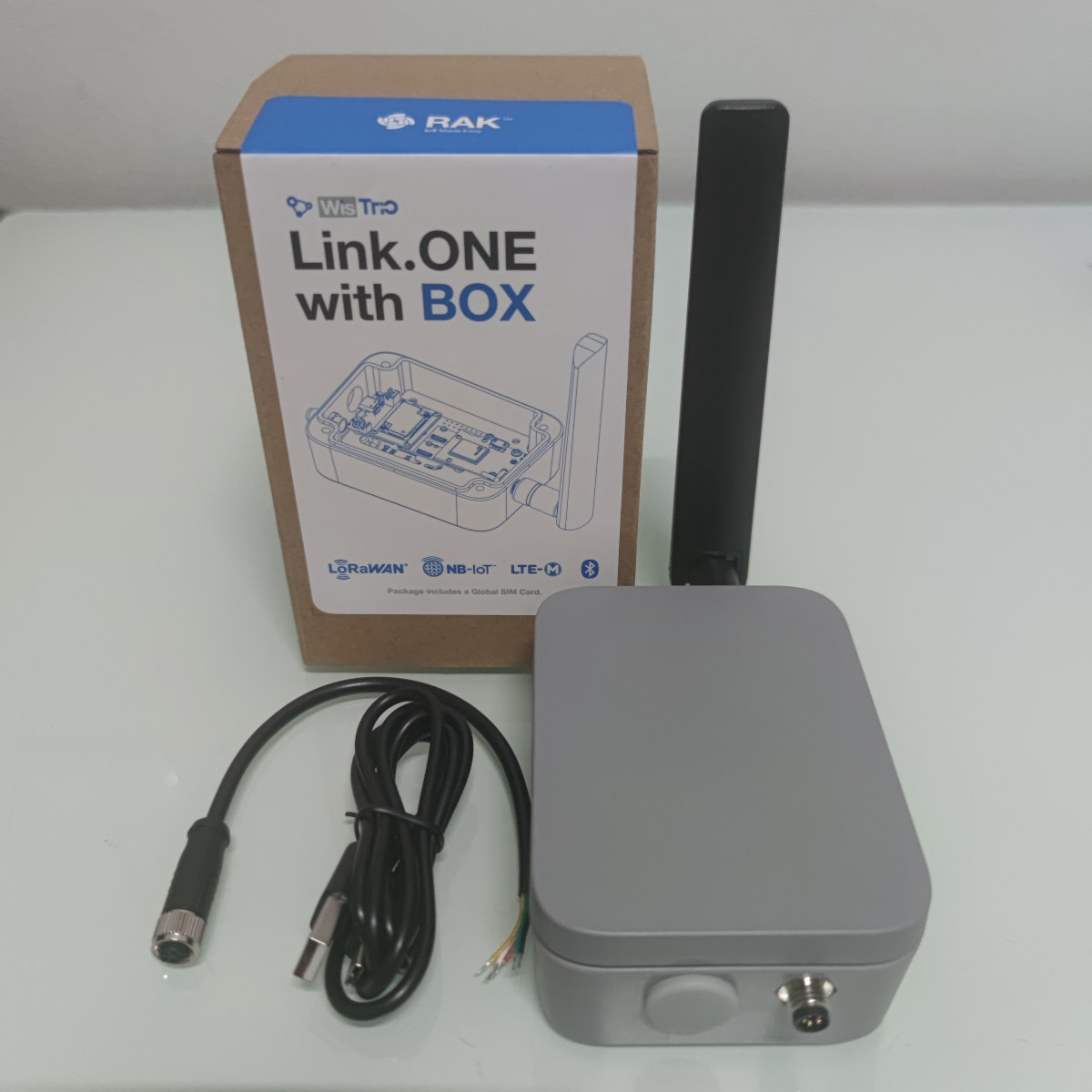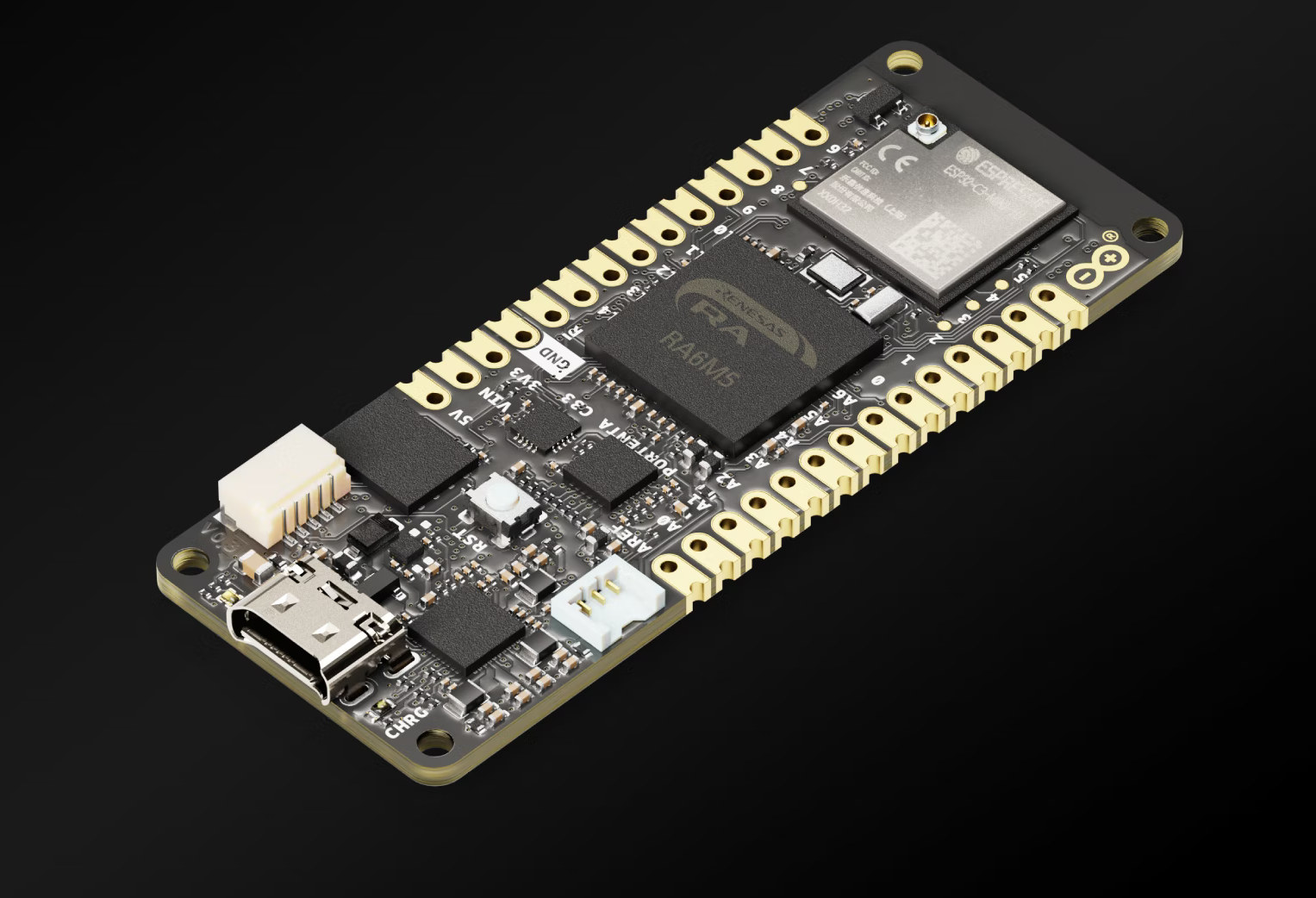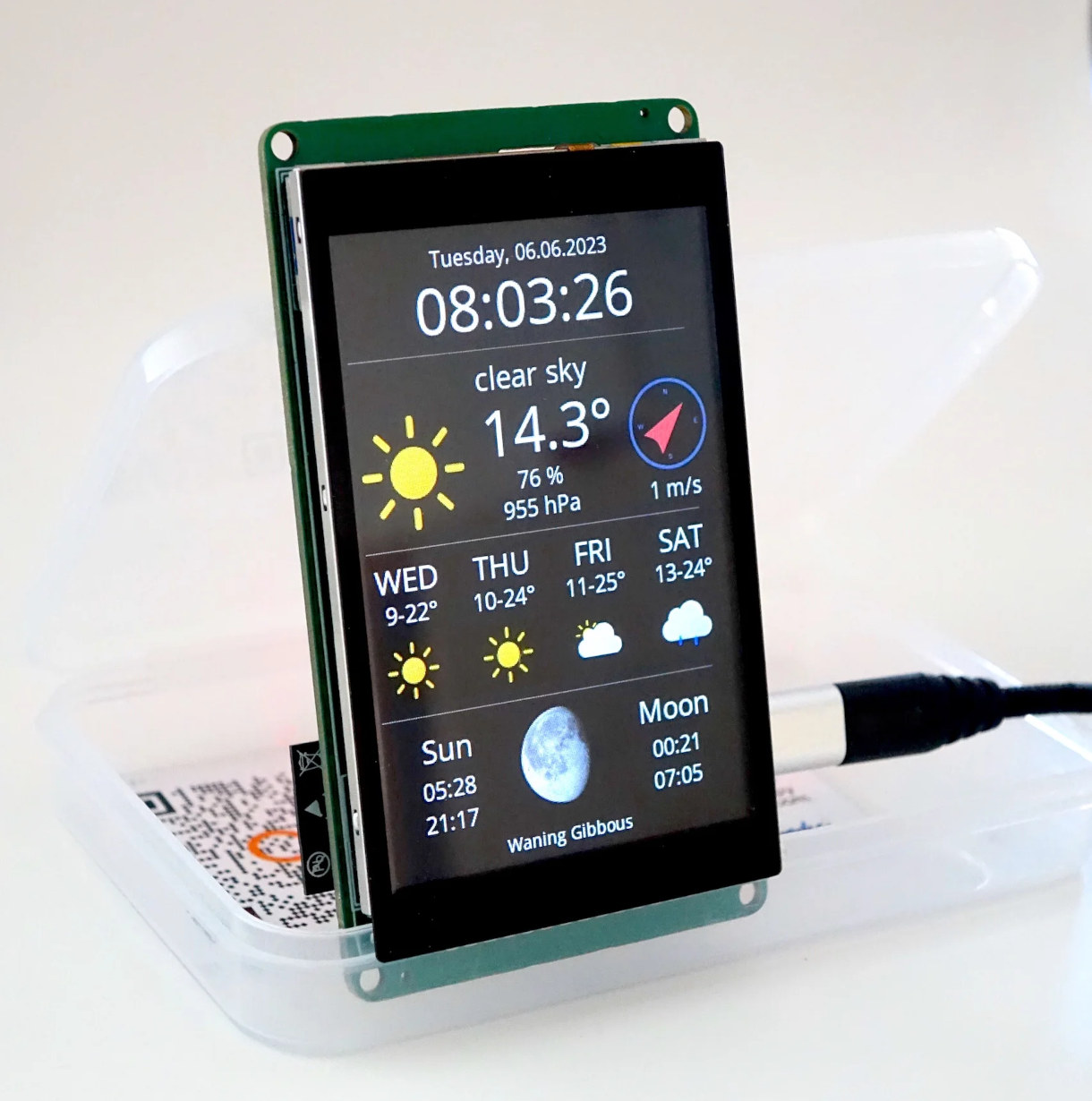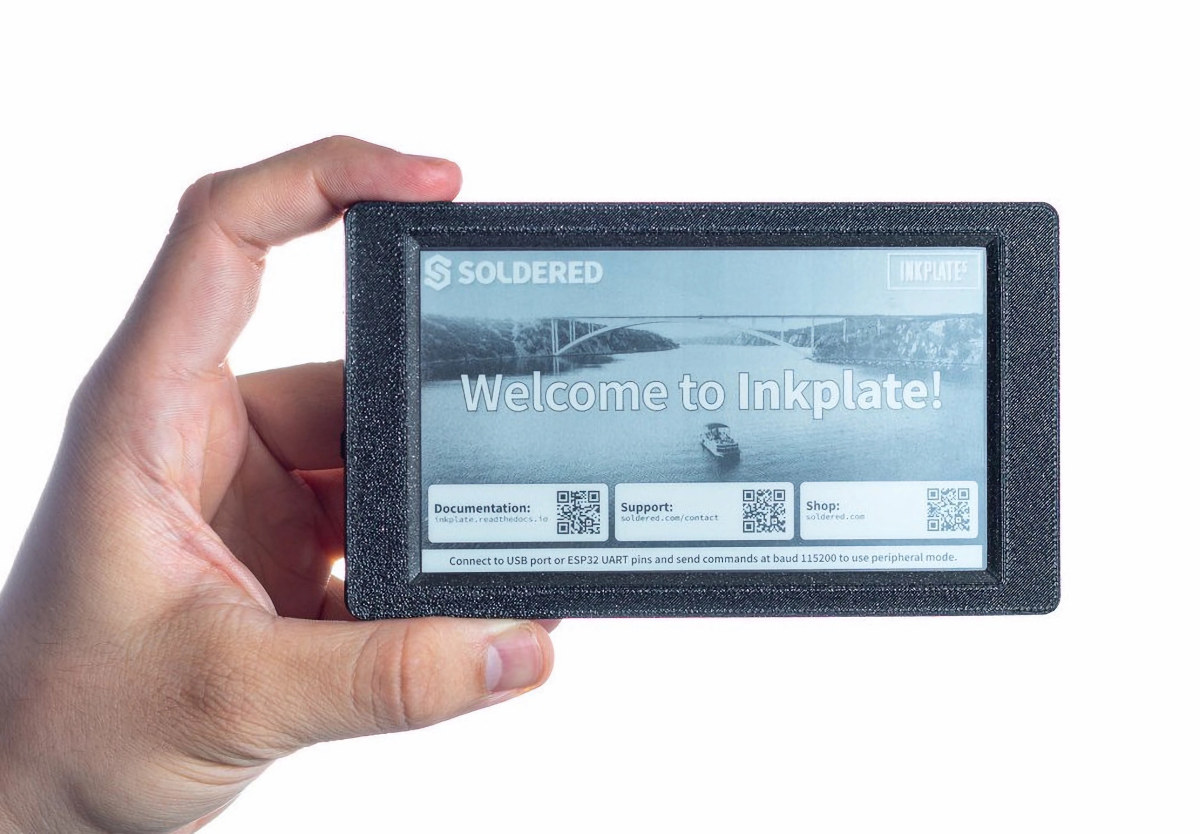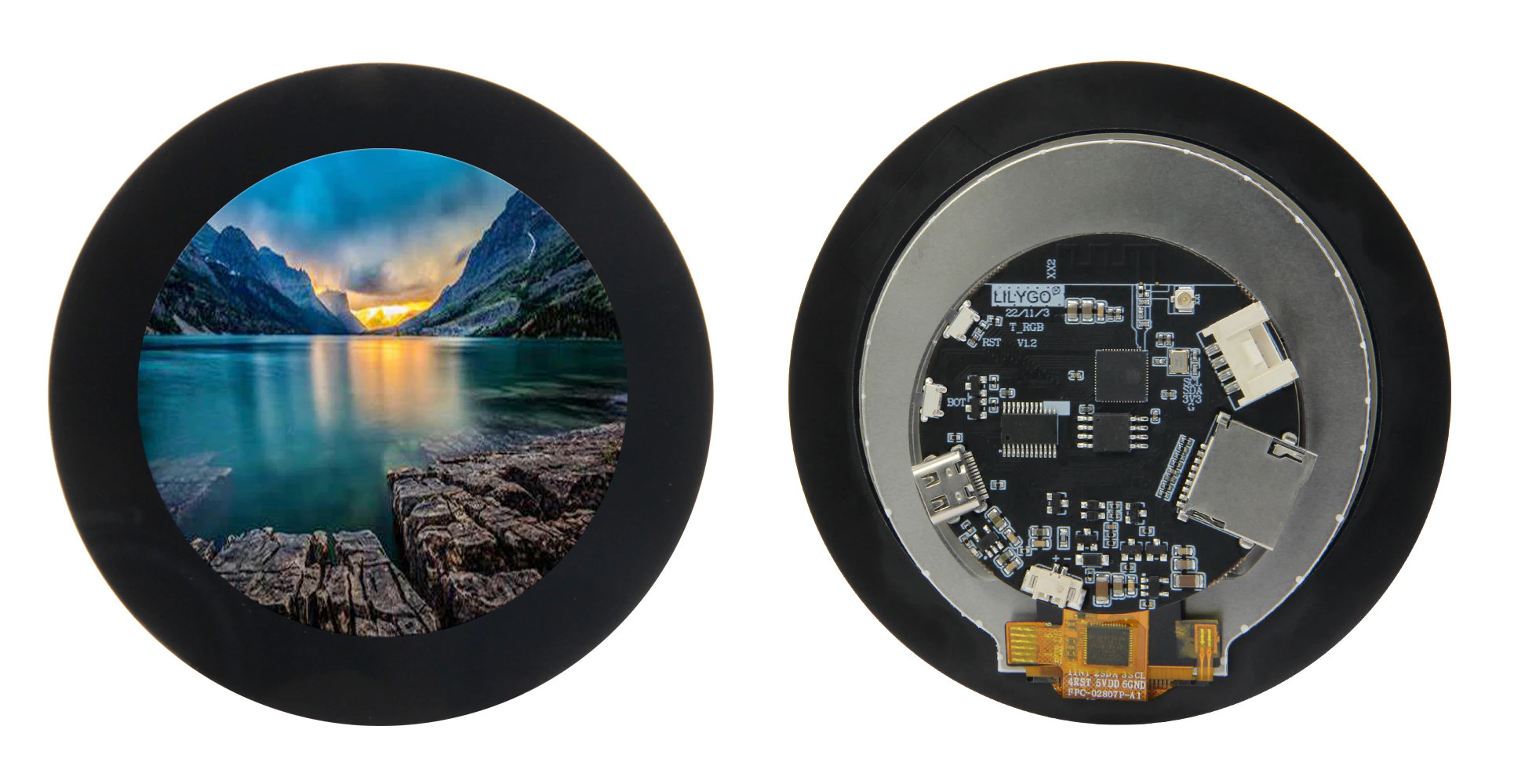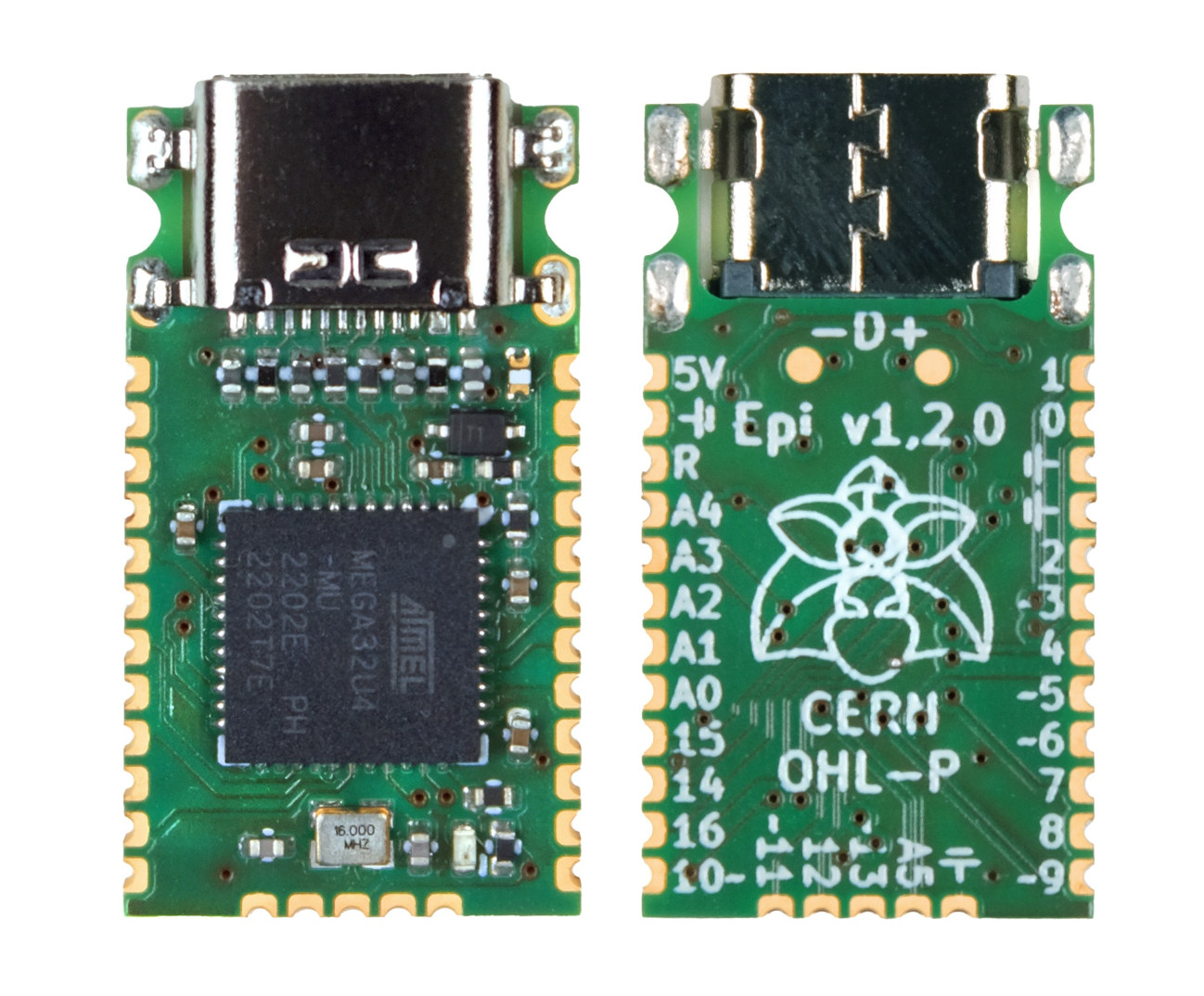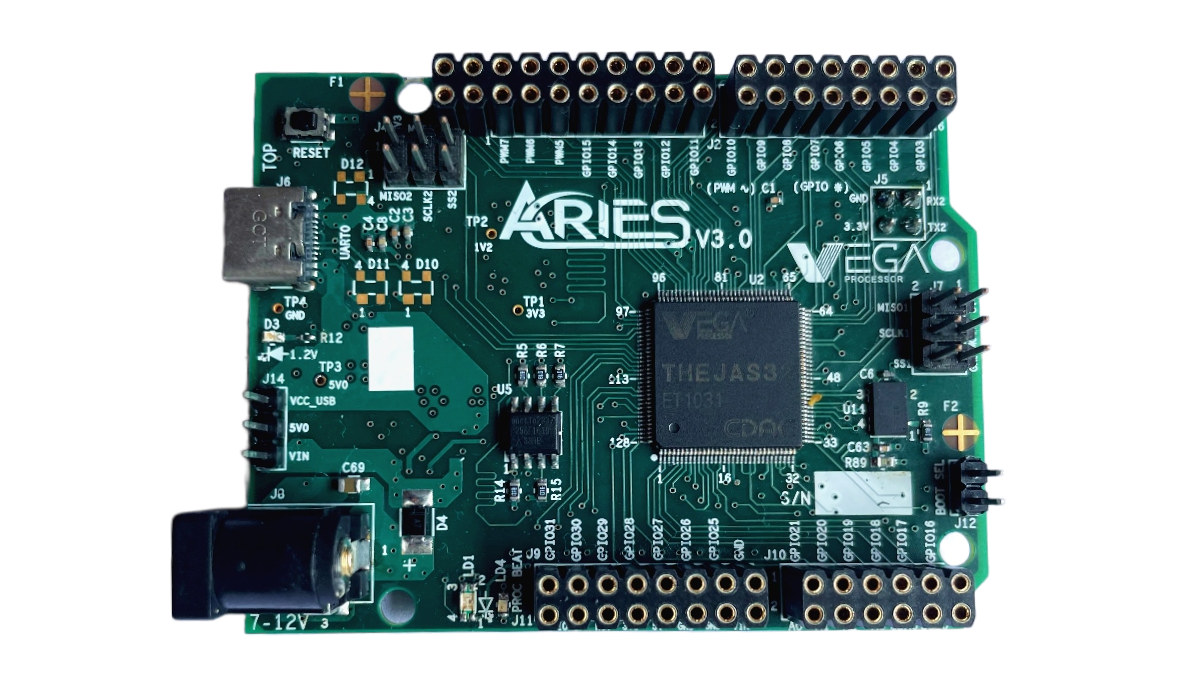RAKwireless has sent us a review sample of the WisTrio Link.ONE all-in-one LPWAN IoT development kit with support for LTE-M, NB-IoT, and LoRaWAN connectivity and programmable with the Arduino IDE. We’ve tested the kit with its weatherproof WisBlock Unify enclosure using LoRaWAN connectivity and open-source software packages and frameworks such as ChipStark, Node-Red, InfluxDB, and Grafana. Key features of the Link.ONE kit The Link.ONE kit we’ve received comes with a WisBlock Unify Enclosure (100 x 75 x 38 mm) and a 3,200 mAh/3.7V rechargeable lithium battery which is sufficient when the system is mostly in sleep mode and used to receive data, while not sending information too often. “Link.ONE with BOX” unboxing The following items were very tightly packed inside the box: WisTrio LTE-M, NB-IoT, and LoRaWAN development board Rechargeable lithium battery External Antenna for cellular USB Type-C cable Circular M8 female cable The enclosure is strong with the lid […]
Portenta C33 is a $64 Arduino Pro board based on Renesas RA6M5 Arm Cortex-M33 MCU
Arduino Portenta C33 is the latest board from the Arduino Pro family which the company dubs a “high-performance, low-price” solution based on a 200 MHz Renesas RA6M5 Arm Cortex-M33 microcontroller and equipped with a ESP32-C3 Wi-Fi and Bluetooth Low Energy module. The new board provides a cost-effective alternative to the Portenta H7 and X8 boards, but still offers wireless connectivity, a secure element for industrial-grade security, and compatibility with Portenta, MKR, and Nicla components. Portenta C33 specifications: Microcontroller – Renesas R7FA6M5BH2CBG Arm Cortex-M33 microcontroller @ up to 200 MHz with 512KB SRAM, 2MB Flash, Arm TrustZone, and Secure Crypto Engine 9 Storage – 16 MB QSPI Flash Connectivity 10/100M Ethernet PHY ESP32-C3 WiFi and BLE module USB – 1x USB Type-C high-speed port with Power Delivery support I/Os via 2x 80-pin high-density connectors, Arduino MKR headers with castellated hole, and a 5-pin I2C connector Storage – SD Card Networking – […]
ESP32 WiFi Color Display Kit Grande is a soldering kit with a 3.5-inch touchscreen display
ThingPulse “ESP32 WiFi Color Display Kit Grande” is an IoT soldering kit based on the company’s ePulse Feather low-power ESP32 development board and a 3.5-inch 320×480 color TFT display with a capacitive touch interface. The kit can be used for all sorts of touchscreen display applications, including an Internet-connected weather station or a Bluetooth-connected Windows, Linux, or Mac OS information display. ESP32 WiFi Color Display Kit Grande content: ePulse Feather low-power ESP32 development board with 8MB Flash and 8MB SPRAM following Adafruit’s Feather form factor 3.5-inch 320×480 color TFT display (ILI9488 display controller) with capacitive touch Interface (FT6236 chip) Custom connector PCB to connect the ESP32 and the display Set of special pin headers to be soldered to the connector PCB On-off switch to be optionally soldered to the connector PCB Grove connector to be optionally soldered to the connector PCB 4x double-sided foam adhesive to secure the display to […]
Inkplate 5 – A 5.2-inch wireless e-paper display programmable with Arduino or MicroPython (Crowdfunding)
The team at Soldered Electronics has been designing Inkplate ESP32-based e-paper displays ever since the first 6-inch model was launched in 2019. The latest Inkplate 5 comes with a recycled 5.2-inch E-Ink (e-paper) display with refresh times of only 0.19 seconds, and programmable with the Arduino IDE or MicroPython firmware. The WiFi-connected display offers a 960×540 resolution, or 213 DPI pixel density, integrates an RTC with battery for accurate timekeeping, two buttons for power and wake/user, and I/O expansion via headers and an easyC/Qwicc connector. Inkplate 5 specifications: Wireless module – Dual-core ESP32 processor with Wi-Fi 4 & Bluetooth 4.0 (BLE) connectivity, 8MB flash, 4MB PSRAM External storage – MicroSD card socket Display – 5.2-inch, 960×540 e-paper display with 213 DPI pixel density Refresh times: full refresh in just 1.02s (1-bit and 3-bit) and partial refresh in 0.19s (1-bit) USB – 1x USB Type-C port for programming and power Expansion […]
T-RGB ESP32-S3 board gets larger 2.8-inch round color display
LILYGO T-RGB ESP32-S3 board was first introduced last year with a 2.1-inch round color touchscreen display, and the company has an update with a T-RGB board with a 2.8-inch display. The new board still offers WiFi 4 and Bluetooth 5.0 connectivity, 8MB PSRAM, and 16MB flash storage, as well as a microSD card socket for storage, a Grove I2C connector for expansion, and LiPo battery support. T-RGB specifications: SoC – Espressif ESP32-S3R8 dual-core Tensilica LX7 microcontroller up to 240 MHz with vector instructions for AI acceleration, 8MB PSRAM, WiFi 4 and Bluetooth 5.0 LE + Mesh connectivity Storage – 16MB SPI flash, MicroSD card socket Display – 2.8-inch round 18-bit RGB color IPS TFT display with 480×480 resolution (ST7701S SPI controller), 3-wire SPI touchscreen panel via GT911 controller USB – USB Type-C port for power and programming Expansion – Grove I2C connector Misc – BOOT and Reset buttons Power Supply […]
Epi 32U4 – An Arduino-compatible USB-C development board with ATmega32U4 MCU (Crowdfunding)
Epi 32U4 is a tiny Arduino-compatible development board based on a Microchip ATmega32U4 8-bit AVR microcontroller with just a USB-Type-C port and 23 I/O pins accessible through castellated holes that can be soldered to headers or another PCB. The board also includes some protection such as a fuse, ESD protection, a ferrite bead, and a low-pass filter for the analog reference voltage. Ping Hobbyelektronik, the developer, says it’s especially useful for compact USB keyboards, but it also has more I/O ports than a standard Pro Micro board, so it’s appropriate for a range of other projects as well. Epi 32U4 board specifications: MCU – Microchip ATmega32U4 8-bit AVR microcontroller @ 8MHz or 16 MHz with 32 KB flash, 2.5 KB SRAM, 1 KB EEPROM USB 1x USB Type-C port for power and programming USB D+ and D- lines are broken out ESD and surge protection on USB data lines and […]
ARIES v3.0 development board features India-made VEGA RISC-V processor
ARIES v3.0 is an Arduino-inspired development board with the made-in-India 100 MHz THEAJS32 ASIC with the VEGA ET1031 RISC-V microprocessor, 256KB of internal SRAM, and various I/Os. Not to be confused by the recent FIVEberry RISC-V SBC made by ARIES Embedded… We first wrote about VEGA RISC-V processors designed in India in February 2022, and at the time, the government worked on five RISC-V processor designs ranging from a single-core 32-bit RISC-V microcontroller-class processor to a Linux-capable quad-core 64-bit out-of-order processor, with the entry-level THEJAS32 and THEJAS64 SoCs based on respectively VEGA ET1031 and VEGA AS1061 cores running on an ARTY A7 FPGA board. But good progress has been made since then, and they have tapped out the THEJAS32 processor and manufactured some development boards such as the ARIES v3.0. ARIES v3.0 development board specifications: MCU – THEJAS32 VEGA ET1031 32-bit 3-stage in-order RISC-V ( RV32IM) microcontroller @ 100 MHz […]
LILYGO T-FPGA devkit combines ESP32-S3 WiSoC with Gowin GW1NSR-4C FPGA
LILYGO T-FPGA development kit is comprised of an M.2 module with an ESP32-S3 WiFi and Bluetooth wireless microcontroller and a Gowin GW1NSR-4C FPGA with 4,608 LUTs, and a carrier board that gives easy access to I/Os and comes with a 18650 battery holder. The module comes with a USB -C OTG port connected to the ESP32-S3, and a USB-C FPGA port for the FPGA. The “T-FPGA shield” carrier board includes four Pmod interfaces and a STEMMA Qt/Qwiic connector for expansion, plus several pins for 3.3 and GND, and another 20-pin I/O header. LILYGO T-FPGA specifications: Wireless MCU – Espressif Systems ESP32-S3R8 dual-core Tensilica LX7 @ up to 240 MHz with vector instructions for AI acceleration, 512KB RAM, 8MB PSRAM, wireless connectivity Storage – 16MB flash FPGA – Gowin Semiconductors GW1NSR-LV4CQN48PC6/I5 with 4,608 LUT4, 256Kb flash, 64Mb PSRAM, 64Mb Hyperflash, 32Mb NOR flash Connectivity via ESP32-S3 2.4 GHz 802.11 b/g/n Wi-Fi […]


